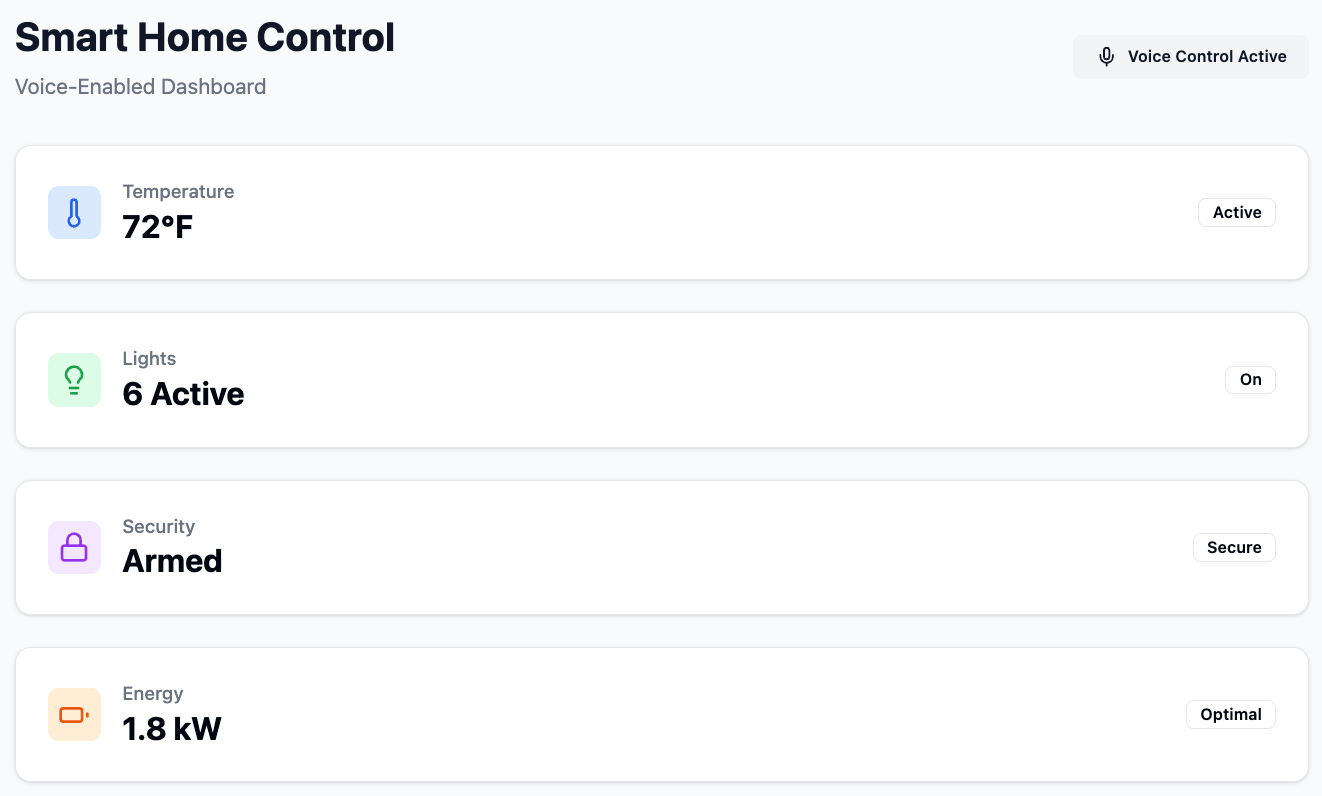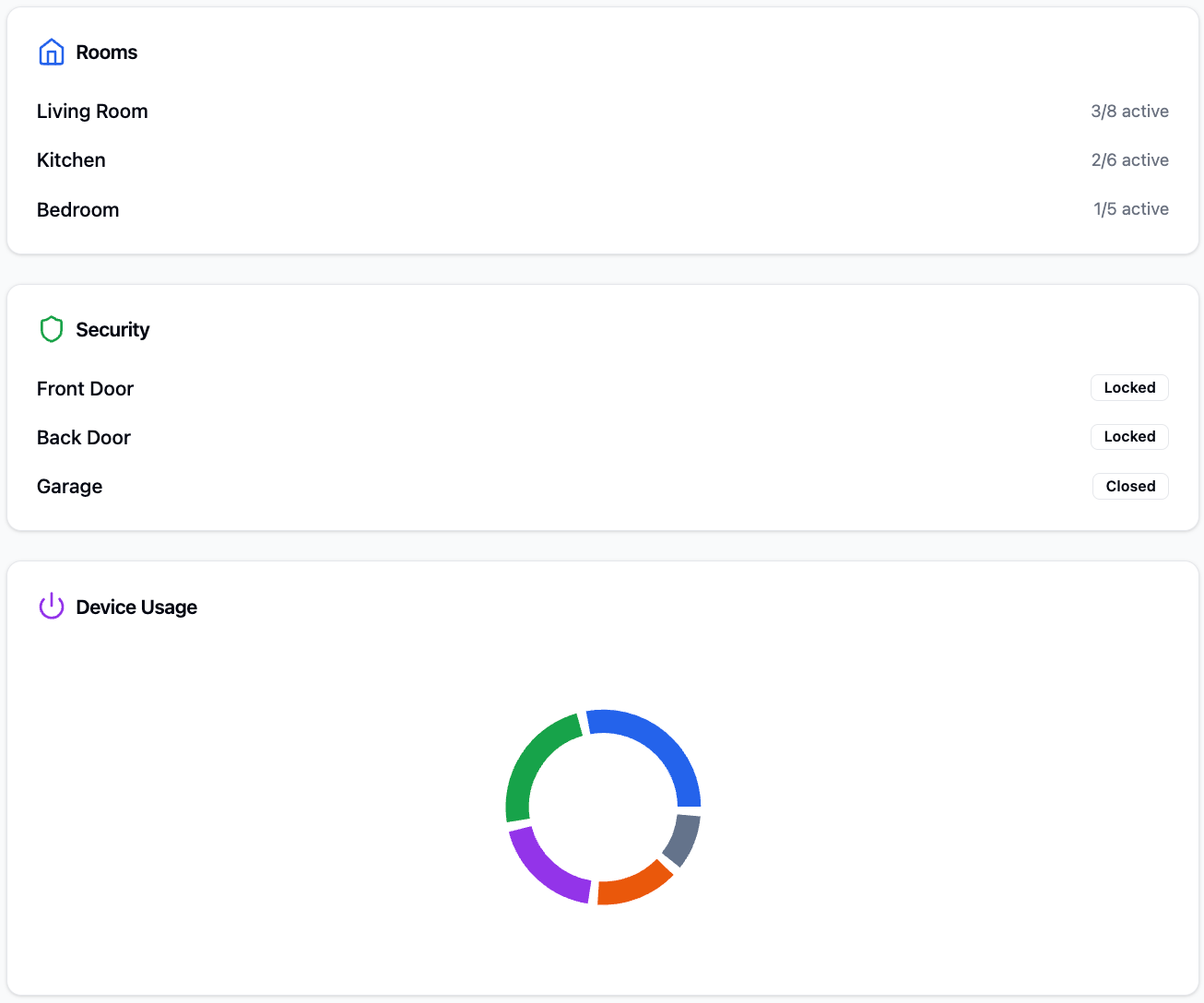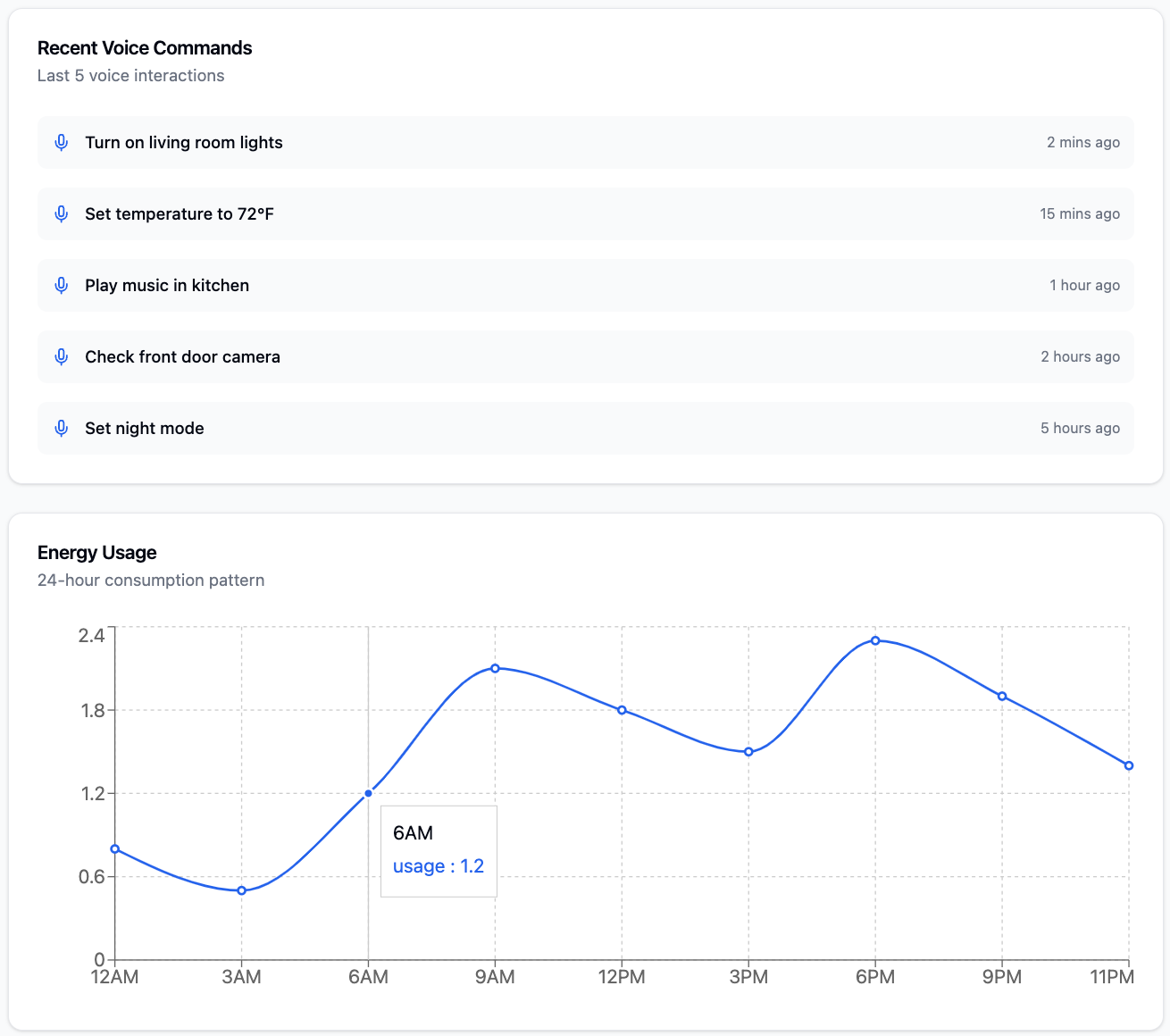Create a Voice Controlled Smart Home Dashboard with Vapi AI: The Complete Guide
The smart home has moved beyond automation and is now an intelligent, reactive space that responds to us. By combining Vapi AI’s voice recognition with smart home tech, we can create intuitive AI voice controlled dashboards to change the way we interact with our homes. This guide will show you how to build a voice controlled smart home dashboard that’s both powerful and easy to use.
Introduction to Vapi AI
Vapi AI is a powerful tool that enables businesses to build and deploy intelligent voice agents, revolutionizing customer interactions and business operations. With Vapi AI, companies can create personalized voice assistants that provide quick responses to customer inquiries, helping to boost efficiency and stay competitive in the market. By leveraging voice technology, businesses can enhance user experience, improve customer satisfaction, and gain a competitive edge. Whether it’s handling routine queries or addressing complex issues, Vapi AI’s voice agents are designed to streamline operations and deliver exceptional service.

The Foundation: Smart Home Voice Assistants Control
Before we get started let’s understand how voice AI can change smart home interaction. Voice commands are a natural way to control your environment, no more navigating through multiple apps or remembering complex sequences. When powered by Vapi AI, these systems can understand context, learn from interactions, and provide a truly seamless user experience.
Getting Started with Vapi AI
Getting started with Vapi AI is easy and straightforward. Simply sign up for an account, choose a plan that suits your needs, and access the Vapi dashboard. The dashboard provides a user-friendly interface for building, training, and deploying voice agents. With Vapi AI, you can create voice agents that support multiple languages, making it an ideal solution for businesses with global customer bases. The intuitive design of the Vapi dashboard ensures that even those new to voice technology can quickly get up to speed and start creating effective voice agents.

Build Your Voice Controlled Dashboard: Step by Step Guide
1. Planning
Start with a clear idea of what your system can do:
-
Device compatibility requirements
-
Core voice command structures
-
Scalability and future integrations
-
User scenarios and interactions
-
Performance metrics
2. Technical with Vapi AI
Setup
First start by setting up your development environment:
-
Create a Vapi AI account and project
-
Basic platform settings
-
Development and testing environments
-
API connections
Voice Command
Command structure:
-
Natural language patterns
-
Command hierarchies
-
Contextual understanding
-
Confirmation responses
-
Error handling scenarios
-
Text-to-speech capabilities with over 200 AI voices in multiple languages, suitable for voice-overs, educational content, and business presentations
Smart Home Devices
Connect your smart home:
-
Device API connections
-
Device state management
-
Real time status updates
-
Device grouping logic
-
Fallback protocols
Building and Training Your Voice Agent
Building and training a voice agent with Vapi AI involves several steps. First, define the purpose and scope of your voice agent, including the tasks it will perform and the user interactions it will handle. Next, create intents and entities that represent the actions and subjects of those actions. Then, train your voice agent using sample sentences and phrases that users are likely to say when interacting with it. Finally, test your voice agent to ensure it responds accurately and effectively to user queries. This process ensures that your voice agent is well-prepared to handle a variety of customer interactions with precision and ease.

Deploying and Integrating Your Voice Agent
Once your voice agent is built and trained, it’s time to deploy and integrate it with your business operations. Vapi AI provides seamless integration options, including web widgets, mobile apps, and connections to smart home devices. With Vapi AI, you can deploy your voice agent across multiple channels, making it easily accessible to your customers. By integrating your voice agent with your business operations, you can streamline customer interactions, improve efficiency, and enhance user experience. This multi-channel approach ensures that your voice agent is always available to assist, no matter where your customers are.
3. User Experience
Dashboard
Design a visual interface that:
-
Shows device status
-
Voice command suggestions
-
System feedback
-
Manual control options
-
Usage statistics
Voice Flow
Conversational patterns:
-
Conversational prompts
-
Confirmation dialogues
-
Multiple command variations
-
Context awareness
-
Command chaining
Impact
Convenience
-
Hands free device control
-
Natural language commands
-
Multi device control
-
Automated routines
-
Remote access
Accessibility
-
Voice first interaction
-
Reduced physical interaction
-
Customizable command patterns
-
Adaptive learning
-
Universal design
Energy Efficiency
-
Quick device management
-
Usage pattern analysis
-
Automated optimisation
-
Real time consumption monitoring
-
Smart scheduling
Automation
-
Context awareness
-
Learned preferences
-
Scheduled routines
-
Environmental adaptation
-
Predictive actions
Examples
Daily Life
Change everyday tasks through:
-
Morning/evening routines
-
Climate control
-
Lighting scenes
-
Entertainment system
-
Security system
Energy
Optimise energy through:
-
Smart thermostat
-
Lighting
-
Device power
-
Usage pattern
-
Scheduling
Security
Improve home security with:
-
Voice controlled locks
-
Camera feed
-
Motion sensor
-
Alert system
-
Access log
Entertainment
Manage media through:
-
Music system
-
TV/streaming
-
Multi room audio
-
Scene
-
Playlist
Advanced Features
Routines
Create complex automated routines:
-
Time triggers
-
Event actions
-
Conditional execution
-
Multi device coordination
-
Custom scenes
Environmental Learning
Adaptive features:
-
Usage pattern recognition
-
Preference learning
-
Behavioural adaptation
-
Predictive automation
-
Context awareness
Additionally, platforms like OpenAI’s ChatGPT are integrated to analyze call transcripts for sentiment analysis, enhancing voice agent interactions and improving overall efficiency in lead management.
Monitoring and Improving Performance
Monitoring and improving the performance of your voice agent is crucial to ensuring its effectiveness and accuracy. With Vapi AI, you can collect user feedback and analyze performance metrics to identify areas for improvement. By continually refining and updating your voice agent, you can ensure it remains effective and user-friendly, providing quick responses to complex issues and helping to boost efficiency and customer satisfaction. By leveraging OpenAI’s ChatGPT, you can also analyze user sentiment and improve your voice agent’s ability to handle human-like conversations. This ongoing optimization process is key to maintaining a high level of service and staying competitive in the market.
Tips for Success
- Command
-
Natural language patterns
-
Simple and clear commands
-
Command alternatives
-
Confirmation feedback
-
Command shortcuts
- Performance
-
Response times
-
Recognition accuracy
-
Usage patterns
-
Device communication
-
System updates
- User
-
Feedback mechanisms
-
Command structure
-
Consistent interaction
-
Manual override options
-
Error messages
Future Proofing
Scalability
-
Design for growth
-
New device types
-
Multi location support
-
Increased usage
-
Flexibility
Innovation
-
Technology trends
-
Feature expansion
-
AI
-
New integrations
-
Upgrade paths
Security and Privacy
Data
-
Voice authentication
-
Device communication
-
User data
-
System access
-
Security updates
Privacy
-
User data management
-
Command logging
-
Privacy settings
-
Data retention
-
Access controls
Summary
Building a Vapi AI smart home dashboard is a big step towards a more convenient and accessible living space. Follow this guide and focus on user experience, technical excellence and continuous improvement and you’ll have a powerful system that enhances daily life and home management.
Remember implementation is an iterative process. Start with core functionality, get user feedback and refine. With planning and execution your voice controlled smart home dashboard will be an essential part of modern life, convenience, efficiency and control.
Let's Talk
Your ride-or-die partner
Your own world-class product team at a fraction of the cost
Tell us about yourself
- From Idea to Product 10X Faster
- Unlimited Request & Revisions
- Streamlined Tooling
- Your Dedicated Team
